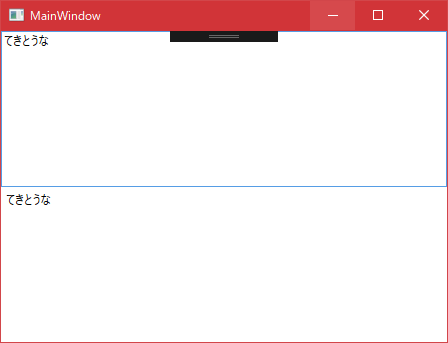はじめに
前回の記事で以下のように締めくくりましたけど、自動的に反映されるようにするには、もう少し修正が必要でした。
MainViewModel.BindTextを動的に変更すると、それに合わせてLabelのContentプロパティにも自動的に反映される。
XAML
まずはユーザからの入力値をViewModelへ反映したいので、TextBoxを追加します。
さらにXAML(UI)の値がバインドしたViewModelへ反映されるようにバインドのパラメータを追加します。
MainView.xaml
<Grid>
<Grid.RowDefinitions>
<RowDefinition/>
<RowDefinition/>
</Grid.RowDefinitions>
<TextBox x:Name="textBox" Margin="0,0,0,0" TextWrapping="Wrap" Text="{Binding BindText, Mode=TwoWay, UpdateSourceTrigger=PropertyChanged}" AcceptsTab="True" AcceptsReturn="True"/>
<Label Content="{Binding BindText, Mode=OneWay, UpdateSourceTrigger=PropertyChanged}" Margin="0,0,0,0" Grid.Row="1"/>
</Grid>
ViewModel
ViewModelの方も値の変更をXAMLに伝えてあげる必要があります。
MainViewModel.cs
using System.ComponentModel;
:
class MainViewModel : INotifyPropertyChanged
{
private string _bindText = "てきとうな初期値";
public String BindText
{
get
{
return this._bindText;
}
set
{
this._bindText = value;
this.OnPropertyChanged(nameof(BindText));
return;
}
}
public event PropertyChangedEventHandler PropertyChanged = null;
protected void OnPropertyChanged(string info)
{
this.PropertyChanged?.Invoke(this, new PropertyChangedEventArgs(info));
}
}
完成
これで、TextBoxの変更がすぐさまLabelに反映するはずです。
今回ViewModelで追加した部分はBaseViewModelみたいなクラスとして分離しておけば、ViewModelが複数になっても対応するのが簡単になると思います。
